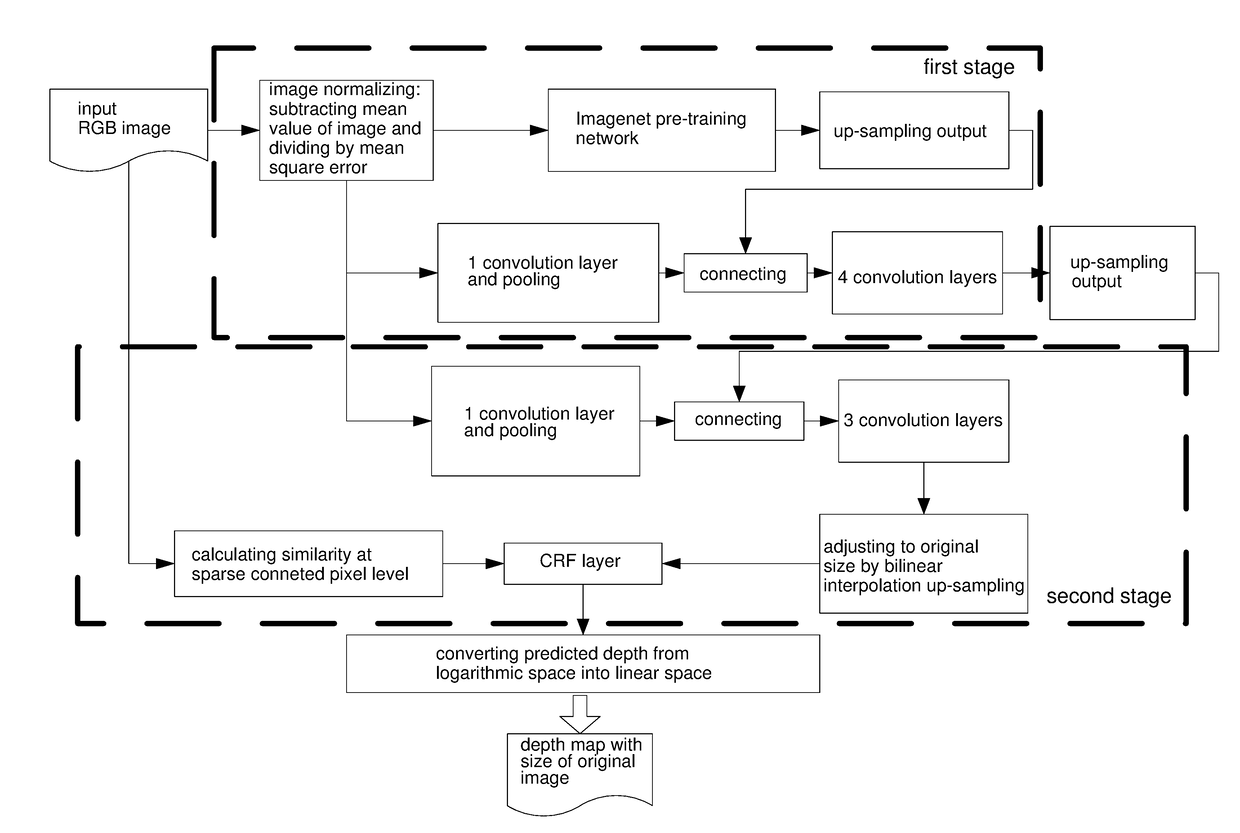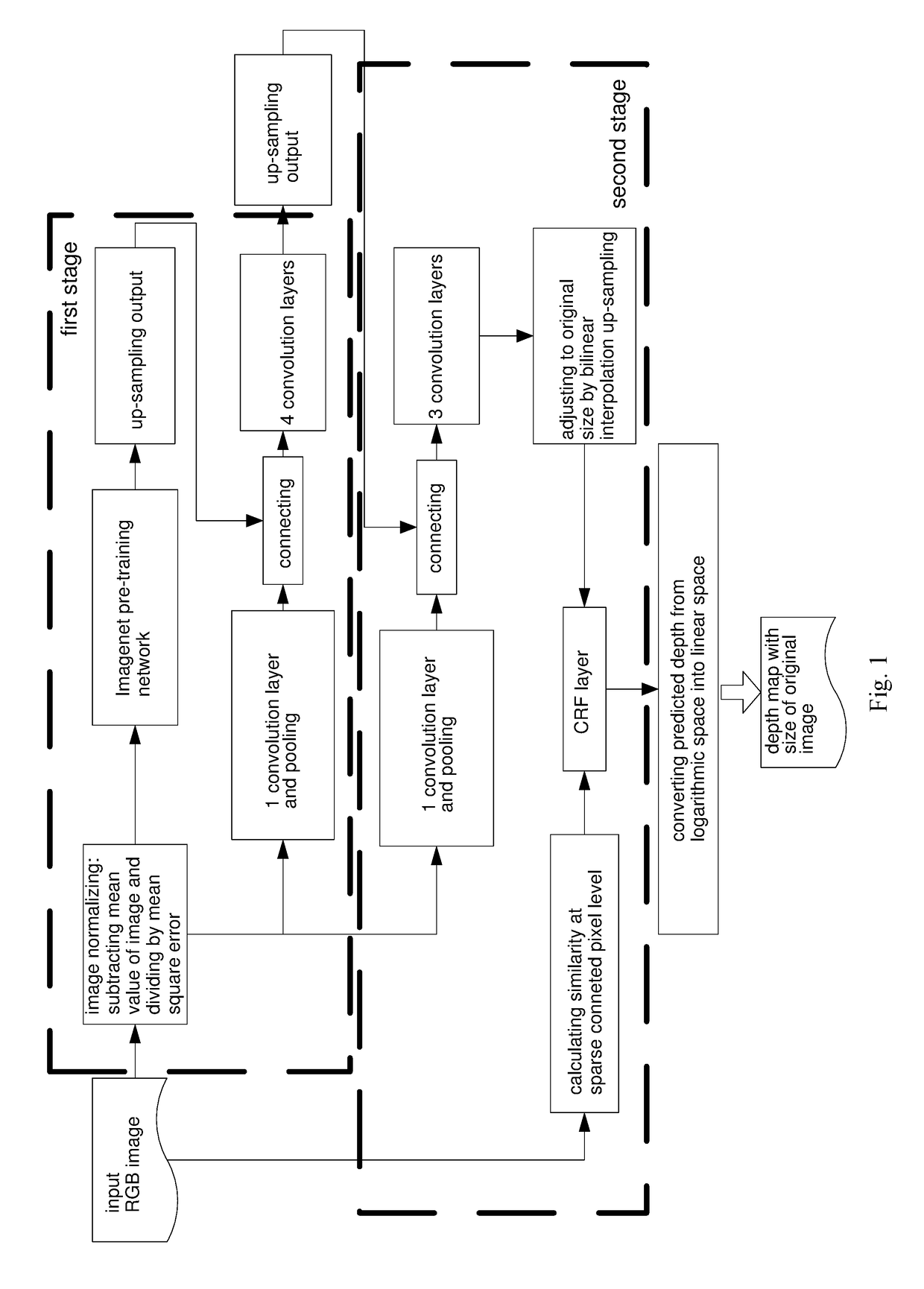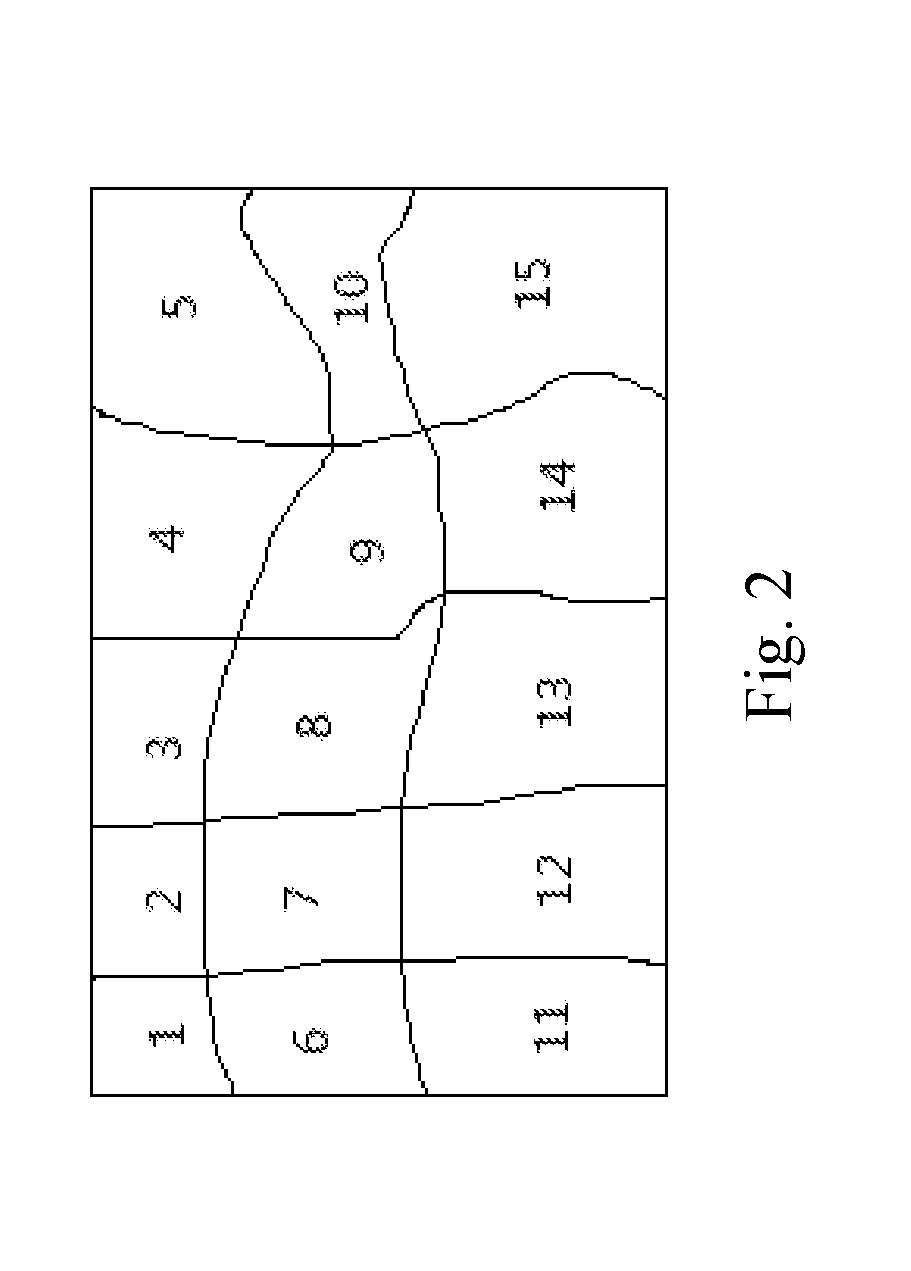Depth estimation method for monocular image based on multi-scale CNN and continuous CRF
a depth estimation and monocular image technology, applied in image enhancement, camera focusing arrangement, printers, etc., can solve the problems of many details lost, lack of localization of dcnn output, etc., and achieve high resolution, clear contour, and high accuracy
- Summary
- Abstract
- Description
- Claims
- Application Information
AI Technical Summary
Benefits of technology
Problems solved by technology
Method used
Image
Examples
embodiment 1
[0061]1. using original data of 249 scenes in 464 indoor scenes of NYU Depth v2 data set as training samples, down-sampling an RGB image thereof from 640×480 to 320×240; then cropping a 304×228 area by random translation as the final output image; extracting 1200 different image samples from each scene, and expending to about 2000000 image samples by data enhancement such as translating, rotating, scaling, luminance shifting, and flipping;
[0062]2. executing the first stage training, wherein a first stack adopts an Imagenet pre-trained Alexnet;
[0063]3. fixing network parameters obtained in the first stage, and proceeding the second stage of training, which comprises parameter optimization of a second half of DCNN and a CRF;
[0064]4. since network output results are natural logarithm depths, recovering depth data by transformation from natural logarithms space to linear space; and
[0065]5. using the network to estimate depth of any indoor scene, wherein the size of the input image shoul...
embodiment 2
[0066]1. using original data of 249 scenes in 464 indoor scenes of NYU Depth v2 data set as training samples, down-sampling a RGB image thereof from 640×480 to 320×240; then cropping a 304×228 area by random translation as the final output image; extracting 1200 different image samples from each scene, and expending to about 2000000 image samples by data enhancement such as translating, rotating, scaling, luminance shifting, and flipping;
[0067]2. executing the first stage training, wherein a first stack adopts network structure and parameters of an Imagenet pre-trained VGG16;
[0068]3. fixing network parameters obtained in the first stage, and providing a second stage of training, which comprises parameter optimization of a second half of DCNN and a CRF;
[0069]4. since network output results are natural logarithm depths, recovering depth data by transformation from natural logarithms space to linear space; and
[0070]5. using the network to estimate depth of any indoor scene, wherein a s...
embodiment 3
[0071]1. using original data of 249 scenes in 464 indoor scenes of NYU Depth v2 data set as training samples, down-sampling an RGB image thereof from 640×480 to 320×240; then cropping a 304×228 area by random translation as the final output image; extracting 1200 different image samples from each scene, and expanding to about 2000000 image samples by data enhancement such as translating, rotating, scaling, luminance shifting, and flipping;
[0072]2. executing the first stage training, wherein a first stack adopts an Imagenet pre-trained Alexnet;
[0073]3. fixing network parameters obtained in the first stage, and executing a second stage of training, wherein only a second half of DCNN to the last convolution layer, namely the second dotted box in FIG. 1, is trained;
[0074]4. randomly choosing one sample in each scene of the training set as a data set for cross validation of CRF parameters, and using an output of the previously trained DCNN and inter-pixel sparse similarity matrix data ca...
PUM
 Login to View More
Login to View More Abstract
Description
Claims
Application Information
 Login to View More
Login to View More - R&D
- Intellectual Property
- Life Sciences
- Materials
- Tech Scout
- Unparalleled Data Quality
- Higher Quality Content
- 60% Fewer Hallucinations
Browse by: Latest US Patents, China's latest patents, Technical Efficacy Thesaurus, Application Domain, Technology Topic, Popular Technical Reports.
© 2025 PatSnap. All rights reserved.Legal|Privacy policy|Modern Slavery Act Transparency Statement|Sitemap|About US| Contact US: help@patsnap.com



